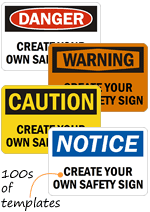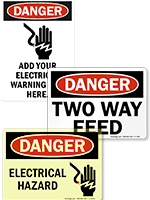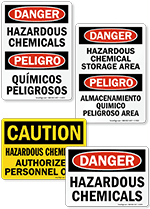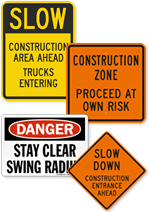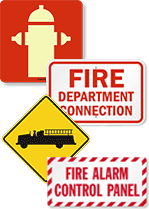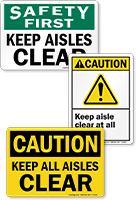Did you know the United States is the second-largest user of pesticides after China? Although the use of pesticides has gone down by more than 40 percent since 1992, the emergence of more potent chemicals has become a bigger threat to many species.
A pesticide is any substance "intended to prevent, destroy, repel, or mitigate any pest." It may not occur to everyone that we are surrounded by pesticides almost everywhere - at homes and lawns, schools and parks, and agricultural fields, of course.

Pesticides have played a pivotal role in increasing the production of major crops like rice and wheat and have proven indispensable in preserving the yield. But we can't overlook the fact that pesticides are causing several risks to human health, non-target organisms, the food chain, and biodiversity, and thus to the environment as a whole.
Pesticide warnings, hence, have been taken into greater consideration year on year by state and federal agencies to minimize the risks associated with them.
The Environment Protection Agency (EPA) has associated with the Pesticide Educational Resources Collaborative (PERC) to guide users of agricultural pesticides on how to comply with the requirements of the federal Worker Protection Standard (WPS). EPA has in the past determined that some pesticides, such as DDT, aldrin, dieldrin, chlordane, and heptachlor, posed unreasonable risks and thus taken strict actions to ban their use in the country.
Providing sufficient and standardized pesticide warnings has become mandatory for compliance. Pesticide product labels require detailed information and must comply with EPA regulations. Moreover, with the help of posted signs and verbal warnings, agricultural employers are required by law to inform in advance about pesticide application and clearly demarcate the treated area. Workers must also be supplemented with entry-restriction signs if they are expected to walk within 1/4 mile while working.
What are the official design requirements for warning signs?
The Worker Protection Standard (WPS) by EPA, which aims to reduce pesticide poisonings and injuries among agricultural workers and pesticide handlers, has the following design requirements for warning signs:

• Pesticide Signs must have a white background with legible lettering.
• The words "DANGER" and "PESTICIDES" with their Spanish counterparts "PELIGRO" and "PESTICIDAS" must be at the top.
• The words "KEEP OUT" and "NO ENTRE" must be at the bottom of the sign
• In the center, there must be a red circle with an upraised hand on the left and a stern face on the right. The hand and a large portion of the face must be white. The hand must be at least twice the height of the smallest letters. The length of the face must be only slightly smaller than the hand.
The Spanish portion can be replaced with any alternative non-English language read by the largest group of workers at that establishment.
What should be the ideal placement of these signs?
Pesticide Warning Signs must be posted in an outdoor production area that offers maximum visibility from all reasonably expected points of worker entry to the treated area, including:
• Access roads and borders with any worker housing area within 100 feet of the treated area.
• The footpath and other walking routes that enter the treated area.
Even if there are no reasonably expected points from where a worker can enter, the best practice is to post signs in the 'corners' of the treated area. In enclosed spaces, warning signs must be posted along each aisle or other walking route leading to the treated area.
What are the posting time requirements?
Federally-required Pesticide Warning Signage must be posted :
• Not more than 24 hours before the scheduled pesticide application
• Remain posted during the pesticide application and any restricted-entry interval (REI)
• Signage must be removed or hidden within three days of the application or REI ending, whichever is later
If an agricultural employer leaves the warning signs in place, the area must be treated as if it was under an REI. Workers must not enter, with limited exceptions.
What are the oral warning requirements for employers using pesticides?
Some pesticide labels may require the employer to notify workers both verbally and with vivid signs posted at entrances to the treated area. Oral warnings to workers must include:
• The location and description of the treated area
• The duration during which entry is restricted
• Instructions for not entering the treated area until the REI has expired
Workers must be orally warned before the pesticide application takes place or at the beginning of their first work period if the application is going on or the REI is in effect.
What are the legal ramifications of not following EPA's pesticide regulations?
As per the 2015 revision to WPS, a federal civil penalty of up to $2,750 per violation may be imposed against private applicators (owners/operators of agricultural establishments) and other persons, and up to $18,750 per violation against commercial applicators (owners/operators of pesticide handler establishments) and other persons who fail to comply with WPS requirements including posting Pesticide Warning signage.
Make sure to check with your local authorities or EPA to find out the latest penalties for violations.
What are the laws on Pesticide Storage Area Signs?
Safely storing pesticides is essential for the environment and people. EPA suggests following all storage instructions on the pesticide label for pesticides in small portable containers. More stringent pesticide container regulations will apply to larger containers (500 gallons or more).
Pesticide storage laws vary from state to state. States like Washington, New Hampshire, Maine, and North Carolina have specific requirements on pesticide storage area signs. Many jurisdictions require chemical storage areas to comply with appropriate state and local fire codes. Chemical storage buildings must use signs in accordance with NFPA, building codes, and environmental laws.
Read in detail about Pesticide management and storage laws here.

